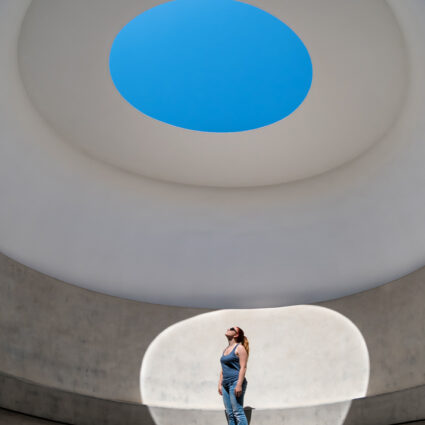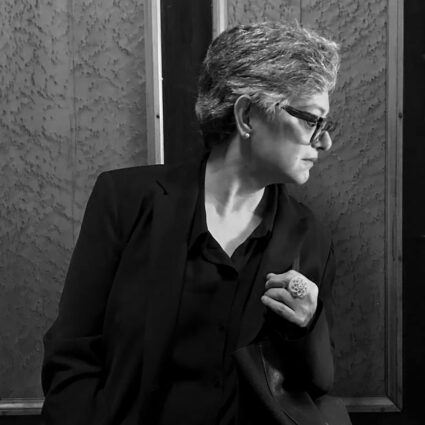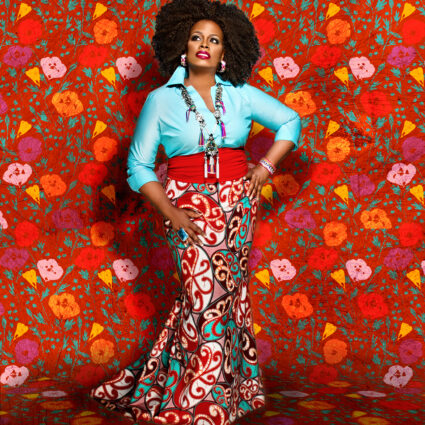Arizona Latinx artists M. Jenea Sanchez and Gabriela Muñoz collaborate to shift conversations about labor, identity, and gaze in Division of Labor at the Scottsdale Museum of Contemporary Art.
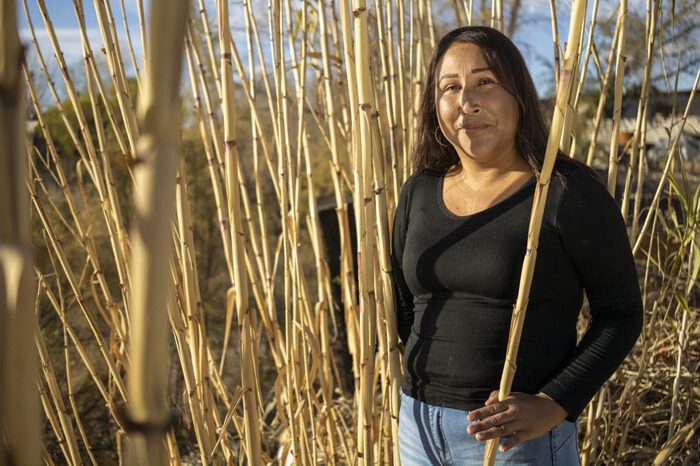
As politicians made noise along the United States-Mexico border in recent years, Arizona-based artists M. Jenea Sanchez and Gabriela Muñoz quietly worked to shift the transnational gaze, collaborating with diverse partners, including a contemporary art museum in the U.S. and a women’s collective in Mexico.
The artists have an ongoing, evolving relationship with the DouglaPrieta Trabajan, a self-help collective based in Agua Prieta, Sonora. The town sits adjacent to Douglas, Arizona, in the borderlands region where Sanchez and Muñoz have centered their collaborative practice.
“We commissioned 300 handmade bricks in 2016, because in the area where these women live, whole families and neighborhoods make them,” says Muñoz, recalling their early experiences with the collective, which built its own center using handmade bricks because members couldn’t afford to meet elsewhere.
The bricks became part of Labor installations featuring serigraph portraits of several women in the collective, first shown during the 2017 exhibition Push Comes to Shove: Women and Power at Scottsdale Museum of Contemporary Art. (A serigraph on handmade bricks by Muñoz and Sanchez is currently on display at Indigenous Women: Border Matters at the Wheelwright Museum of the American Indian in Santa Fe.)
Today, several members of that collective are part of Division of Labor: Women Shifting a Transnational Gaze, an exhibition co-curated by Sanchez and Muñoz at SMOCA in conjunction with Jennifer McCabe, director and chief curator, and Keshia Turley, curatorial assistant. Another longtime collaborator, Mexican-born artist Ammi Robles, is also part of the exhibition, which is scheduled to run through August 22, 2021.
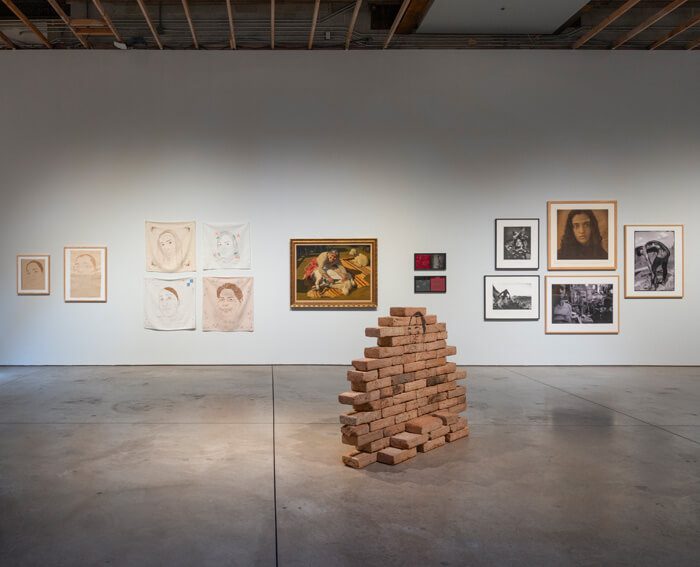
“The museum asked us to critically engage with its collection, considering ways that Latinx voices are underrepresented,” Sanchez says of the concept that seeded the exhibition. “We thought about how we could have a conversation with the collection, and decided we wanted to focus on labor and gaze.”
Early on, they envisioned it as an opportunity to shift viewer perspectives on Latinx identity, but as Sanchez and Muñoz labored together through the process of creating the exhibition, their own gaze shifted as well—and their collaboration became more expansive.
“We invited our collaborators in Agua Prieta to engage in making new work with us, and to rethink the idea of gaze and collaboration,” says Sanchez. “That work is exhibited alongside pieces from the collection, including photographs by Luis González Palma and Pedro Meyer.”
Sanchez and Muñoz had previously created several works incorporating images of collective members. In 2018, for example, Muñoz used breastmilk and Mexican earth to depict women’s faces on hand-embroidered cloth for her Leche Portraits series.
“We’d already been documenting their practices, and rendering and photographing them in our work. We realized that it was time to shift that gaze, so the women did portraits of each other and themselves,” Sanchez says of working with the collective. “We were beginning to have a critical eye on our own practices.”

Muñoz describes it as exploring the “brown on brown gaze,” which is an ever-present factor in their work. “Collaborating with someone and making a space together is different than trying to honor someone by doing a work beyond them,” she says. “We were just ready to work differently.”
More recently, the artists provided the collective with workshops and equipment, which members used to create their own self-portraits and portraits of each other. Meanwhile, Sanchez and Muñoz gleaned new skills from collective members, affirming the reciprocity at play in their cross-border collaboration. “This peer-to-peer learning is so central,” Sanchez says. “They’ve taught us so many things.”
This approach is particularly evident in Caldo de Pollo, a 2020 video and installation by Sanchez and Muñoz that’s part of Division of Labor. Here, viewers see the artists making chicken soup—from catching the birds to serving a community meal.
For her own self-portraiture, created for a photographic series called Earth Tattoo, Sanchez created Brownmilking A Future (C-print, 2021), a work that shows these words placed amid a mixture of earth and breastmilk on the artist’s bare skin.
As their collaboration continues, the work they create takes new forms. Sanchez and Muñoz worked with the collective on documenting its permaculture practices. “The women have been teaching their neighbors how to set up their own gardens, and finding new ways to share their indigenous knowledge.”
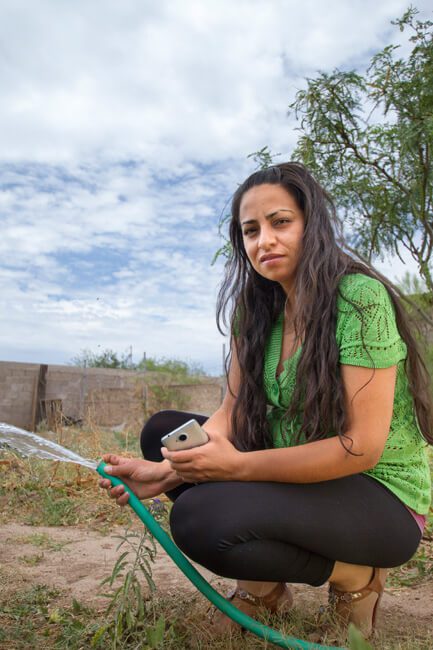
Along the way, Sanchez and Muñoz showed work at The University of Arizona Museum of Art. Later this year, they’ll realize the final elements in their collaboration with the collective in an exhibition at the Museum of Contemporary Art Tucson.
“Collaboration is entering into a relationship with someone, and finding that the finished product is something I never could have envisioned,” Muñoz says.
Sanchez speaks to the implications for art institutions, recognizing that horizontal decision-making isn’t the norm. “Just imagine,” she says, “if more museums would bring in an artist of color to take a look at their collection and make themselves vulnerable to this collaborative process.”
Division of Labor: Women Shifting a Transnational Gaze is on view from February 20 to August 22, 2021 at the Scottsdale Museum of Contemporary Art.
